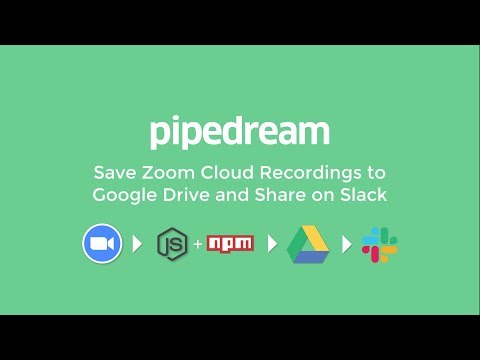RudderStack HTTP
All your customer data pipelines in one platform. Use the Rudderstack HTTP API to send your event data from your sources to the specified destinations.
Integrate the RudderStack HTTP API with the Zoom API
Setup the RudderStack HTTP API trigger to run a workflow which integrates with the Zoom API. Pipedream's integration platform allows you to integrate RudderStack HTTP and Zoom remarkably fast. Free for developers.
Popular RudderStack HTTP and Zoom Triggers#
Emit new event each time a meeting is created where you're the host
Emit new event each time a meeting starts where you're the host
Emit new event each time a new recording completes for a meeting or webinar where you're the host
Emit new event each time a meeting ends where you're the host
Emit new event each time a meeting is updated where you're the host
Popular RudderStack HTTP and Zoom Actions#
Overview of RudderStack HTTP#
The RudderStack HTTP API gives you the power to track and send events to RudderStack from anywhere you can make an HTTP request. With this API, you can streamline data from your apps, websites, and servers directly into RudderStack, enabling real-time analytics and insights. Using Pipedream, you can harness this capability to automate data collection and orchestration, syncing event data with other services, triggering actions based on customer behavior, or even enriching event data before it hits your data warehouse.
Connect RudderStack HTTP#
import { axios } from "@pipedream/platform"
export default defineComponent({
props: {
rudderstack: {
type: "app",
app: "rudderstack",
}
},
async run({steps, $}) {
const data = {
"userId": `{{pass_user_id_here}}`,
"anonymousId": `{{or_pass_anonymouse_user_id_here}}`,
}
return await axios($, {
method: "post",
url: `${this.rudderstack.$auth.data_plane_url}/v1/identify`,
auth: {
username: `${this.rudderstack.$auth.source_write_key}`,
password: ``,
},
data,
})
},
})
Overview of Zoom#
The Zoom API lets you tap into a rich set of functionalities to enhance the video conferencing experience within your own app or workflow. With the Zoom API on Pipedream, you can automatically create meetings, manage users, send meeting notifications, and more, orchestrating these actions within a broader automation. This allows for seamless integration with other services, enabling both data collection and action triggers based on Zoom events.
Pipedream workflows allow you to run any Node.js code that connects to the Zoom API. Just create a new workflow, then add prebuilt Zoom actions (create a meeting, send a chat message, etc.) or write your own code. These workflows can be triggered by HTTP requests, timers, email, or on any app-based event (new tweets, a Github PR, Zoom events, etc).
Connect Zoom#
import { axios } from "@pipedream/platform"
export default defineComponent({
props: {
zoom: {
type: "app",
app: "zoom",
}
},
async run({steps, $}) {
return await axios($, {
url: `https://api.zoom.us/v2/users/me`,
headers: {
Authorization: `Bearer ${this.zoom.$auth.oauth_access_token}`,
},
})
},
})
Related Videos#
